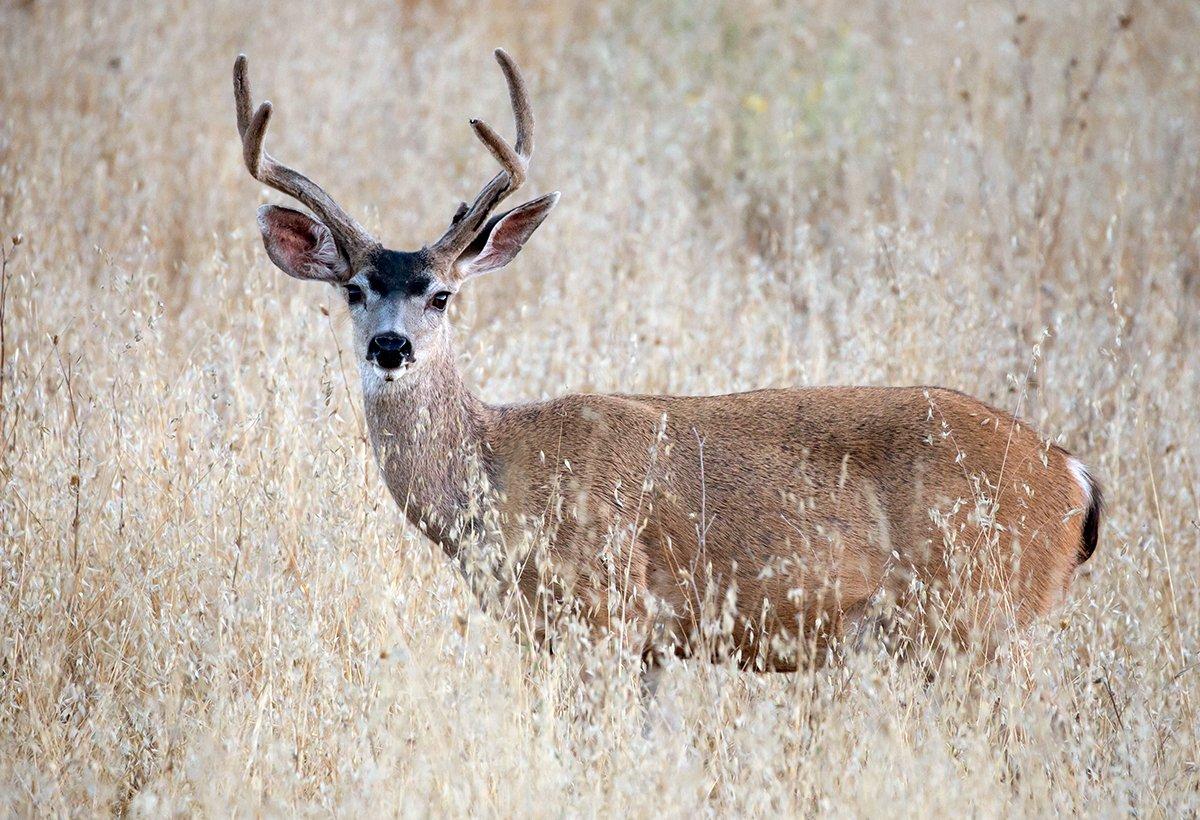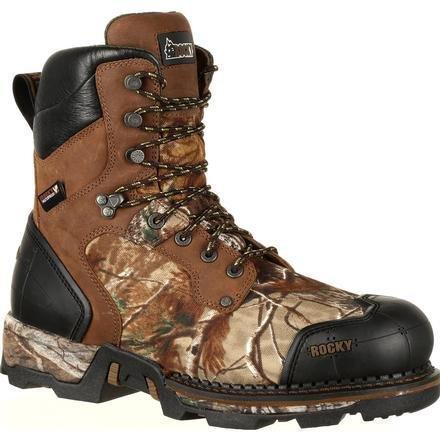Have You Bowhunted This Subspecies of Deer?
I have arrowed a number of Pope & Young blacktail by way of spot and stalk, treestands, calling and rattling, as well as still-hunting. I am convinced that without being versatile in my hunting approach, I would not have enjoyed the success I have had on this most worthy trophy.
I believe that the blacktail's ability to adapt and persevere in differing landscapes makes it a very difficult animal to home in on and tag consistently year after year. The Columbian blacktail lives in the dry and at times scalding-hot climates of northern California in the southern reaches of its range northward to the lush foliage of the rain-forest-like climes of western Washington and southern British Columbia, which marks its northern border. As a point to ponder, my blacktail hunting takes place almost exclusively in a 20-mile radius, which is encompassed in Oregon's mid-Willamette Valley. It is here, within this compact territory, that I have arrowed the chameleon-like blacktail under the intense August sun and out of frigid November treestands.
Tactical Changeups
The interesting aspect of many of my blacktail kills, comes in the fact that although I am hunting the same animal, depending on the time of year, I approach the hunt as though I am hunting different species. This is what makes bowhunting blacktail so challenging. As a whole, blacktail do not really have an obvious weakness. For comparison sake, when perusing the newest edition of the Pope & Young bowhunting record book, you will find most record-class whitetails are taken out of treestands (80 percent roughly) and the overwhelming majority of mule deer are arrowed in a spot and stalk endeavor (hovering near 60 percent). For these respective species, such tactics capitalize on specific weaknesses, slight as they may be, and allow the opportunistic archer to get within bow range.
Oregon, Washington and California each offer bowhunting opportunities beginning in late summer. Here in Oregon the early season generally begins the last week of August and runs until the final week of September. Washington and California have similar season structures, although maybe not as generous in terms of length. For those archers who don't tag out during the early season, Oregon and Washington have a late season, which allows for bowhunting around the time the blacktail will be breeding. It has been during Oregon's late season, which typically begins the second or third week of November and runs for four or five weeks, when I have harvested most of my Pope & Young blacktails.
FUSE Ultra Rest in Realtree Xtra
As I mentioned, most of my blacktail success has come during the late season, but I still enjoy early season bowhunting immensely. Firstly, I am in top physical shape due to a summer full of outdoor activities. Secondly, I am always shooting my best coming out of a summer full of highly competitive 3D archery tournaments. And finally, not only am I shooting my best but also my confidence level is normally peaking, which I believe may be the most essential component of successful archers.
The Early Season
During the early season, my strategy for arrowing big blacktails is strictly the tactic known as spot and stalk. Slipping to within bow range of a good buck during a typical Indian Summer here in the Pacific Northwest can be a monumental task. Blacktail country is not barren and free of underbrush like that of its cousin, the mule deer. When a buck is spotted and a route chosen, closing to within 40-yards of the beast amid bone-dry salal, which might be best described as potato chip brush, tinder dry twigs and sticks from the abundant timber and low-growing, boot-grabbing tentacles of blackberry-like vines, makes this a lesson in futility many times.
I know, for someone who says they enjoy the early season; I am masking it fairly well. The stalking conditions are tough, no doubt about it, but the flip side of the early season is the bucks are quite visible early and late in the day as they are intent on feeding. Not to mention their reddish summer coat is pleasing to the binocular-peering hunter. Much like bachelor herds of mule deer, the velvet-antlered blacktail will have tunnel-visioned focus on nutrition. I believe there is a combination of factors at play here. One being antler development, as their body needs all the supplement it can garner in an effort to promote head gear growth and secondly, I think the bucks have instinctive tendencies to feed on the bountiful foliage of the many logging clear cuts, or similarly vitamin-rich browse, looking toward the impending rut.
When pursuing summer blacktails, you must come to terms with what I call the time factor. In and around my favorite blacktail haunts, there are realistically only five to seven days to effectively hunt summer bucks. You see, while the buck's antlers are encased in velvet, they behave in an atypical manner. The normally secretive black-tailed buck avoids the thickets, underbrush and tree reproduction units (reprod) in an effort to protect his sensitive, velvet-covered antlers. However, once a buck gets an inkling to rub off his velvet, he may as well have been a mirage. When the velvet is removed, big blacktail become almost exclusively nocturnal in a blink of an eye. I have glassed a half dozen mature black-tailed bucks in one of my best buck producing logging units, as their coats were red and their massive antlers were enhanced by the presence of velvet, only to come back the next weekend and find the same unit void of any bucks.
By simply acknowledging that my early season hunting really only amounts to a handful of days, I commit myself to hitting it ultra-hard from the get go. I do not take any stalk or potential opportunity for granted.
The Late Season
Now, the late season has become my bread and butter hunt for trophy-class blacktail. The key to successful bowhunting of trophy blacktail during the rut (or breeding season) lies in one essential requirement -- a good buck-to-doe ratio. This good buck-to-doe ratio will ensure a competitive environment in regard to breeding. A healthy supply of bucks and a limited supply of doe's keeps the rutting blacktail buck active. He is constantly in search of receptive does or on the lookout for a doe that he may be able to steal either by simple intimidation or physical confrontation. The astute bowhunter can capitalize on this prime hunting opportunity with shrewd use of treestands, complimented by the use of grunts, doe bleats and/or rattling antlers.
Rocky Hunt Maxx 800G Insulated Boot in Realtree Xtra
The last late-season blacktail I downed met his demise by falling for my rattling and calling ruse. I had manned a treestand, which gave a commanding, yet intimate view of a number of torn-up trails, essentially a hub of deer activity if there ever was one. However, despite my best-laid plans, first light and all the excitement that comes with it had passed and my watch now read 9:30 A.M. I generally give the area ample time to produce on its own before pulling out the stops and embarking on a rattling or calling sequence. Three hours of idle time was long enough from where I sat, which happened to be about 25 feet up a mature fir tree.
I had completed a few rattling sequences, which consisted of tickling the tips lightly for a few seconds, followed by about 60 seconds of rather intense antler rattling and grinding. I threw in a couple of grunts intermittently for good measure and then sat statue-like, eyes darting, awaiting any forthcoming results.
In a fairly typical display of call-responding behavior, I caught movement of a buck circling the downwind side of my calling location. To the ill-prepared or ground-level caller, this would have been curtains. With all the necessary safeguards in place, otherwise known as; proper treestand height and scent-control measures, I withstood the security check. Although the buck was not inclined to close within bow range, he was clearly interested. At 40 yards out, the buck turned to leave and as he did, I emitted a low grunt. That one stopped him in his tracks and a follow-up grunt got him coming my way. He circled uphill and at 25 yards, he paused, and I promptly sent an arrow through his lungs.
Using Treestands
So far as treestand tactics go, I have a hit list of prerequisites that must be met before I'll anchor a stand to a chosen tree. The hunting area must be remote or subject to very little hunting pressure for whatever reason, i.e.; gated roads, washed-out roads, private land access, or wilderness areas.
Next, I will search for natural funnels, saddles or fence lines that will, for whatever reason, funnel deer activity down to a more isolated area. This will allow me to set up in the bottleneck of said funnel, and if all goes well, have deer and big bucks parading by me.
And finally, this treestand site must allow for a low-impact approach and manning. I must be able to stealth in through the dark timber at least an hour before first light, ascend tree and settle in with minimal disturbance. I want to be able to catch the deer leaving the feeding area and intercept them as they move toward their bedding area. For the most part, blacktail do not travel great distances, which makes choosing a stand that is low impact very important. Because of this, most often I will be attempting to climb a tree and get all settled in before daybreak within a couple hundred yards of the feeding area. We all are quite aware of how well unwanted and/or unnatural noise travels on a crisp, late November morning. So a site without a jungle of brush to push through when stalking to my stand, or limbs to fight past while climbing, is what I look for.
Once a site that matches these criteria is found, it is simply a matter of time in the stand before I find out if my physical, mental and emotional preparation has been enough to meet the challenge.
Final Thoughts
Without a doubt, for us hunters who have pursued the black-tailed buck with a bow and arrow in tow, the lamentation of this beast's ability of uncanny self-preservation is no surprise. But, to the greenhorn, I encourage you to come and try your hand at our prized hoofed trophy. At least you won't have to dive headlong into one of bowhunting's most unheralded big-game hunts without any ammo.
Read: 3 Ways to Find Pre-Rut Blacktails
Editor's note: This was originally published November 13, 2003.
Are you a deer hunter thirsty for knowledge? Check out our stories, videos and hard-hitting how-to's on deer hunting.









